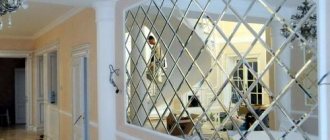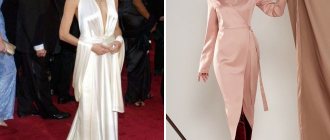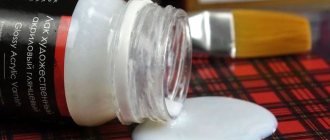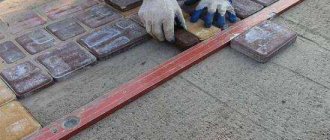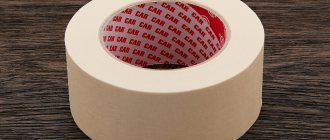Is your house clean? It is quite possible that it seems so to you, but in reality there is something that you simply do not see. A Pikabu user with the nickname zemoneng decided to see what his kitchen looks like under ultraviolet light, and the result was disgusting, fascinating, and raising many questions at the same time.
Meticulous users corrected it:
Then, strictly speaking, this is not a “photo in ultraviolet”, this is a photo in visible light, under the conditions of the manifestation of the photoluminescence effect activated by ultraviolet.
It is UV photography that requires a special UV camera with optics operating at the appropriate wavelengths. Almost ordinary matrices are suitable, but everything from the protective glass of the matrix body to the lens must be UV transparent, plus a filter that cuts off visible light.
A post with his research became popular on Pikabu, and other users began to speculate about the nature of the spots. There were some jokes about how the owner was clearly doing something obscene in the kitchen. But in ultraviolet light, various substances can glow, in particular, fat, without stains of which there is no way in the kitchen. If you watched the series “Sherlock”, you will be able to remember how in one of the episodes Holmes found traces and messages from children that were left with the help of linseed oil. In ordinary light they were not visible, but under an ultraviolet flashlight everything secret became clear.
Types of ultraviolet waves
Thus, ultraviolet waves are different from each other. There are three varieties depending on their length:
- UVA (400 – 320 nanometers) – safe for people, penetrates the Earth’s atmosphere and glass;
- UVB (320 – 280 nm) – it is this spectrum of the sun’s ray that triggers the production of vitamin D in the human body, provides us with a tan, is used in solariums, but can be hazardous to health, in particular to vision;
- UVC (280 – 100 nm) is the most dangerous and harsh ultraviolet, can cause skin burns. Retained by the atmosphere. Most often used in medicine for disinfection - kills bacteria, viruses, fungi.
Thus, each type of UV wave has its own purpose. Some are useful for humans, safe, and can be used in everyday life. Others can cause irreparable harm to health and must be used subject to certain safety rules. It is no coincidence that the hospital asks everyone to leave the room or turn away from the source of ultraviolet disinfecting light and even cover their face with a towel.
Rapid aging due to ultraviolet radiation
UVA is responsible for the aging of materials and the appearance of wrinkles ahead of time. It destroys collagen fibers and the skin loses its elasticity.
It is UVA rays that make up the lion's share of all UV radiation on Earth (95%).
Everyone has probably seen old faded banners on the streets, as well as cracked insulation of certain brands of wires and cables hanging in the open air.
So, it is not rain and wind that destroys them first, but ultraviolet radiation. It causes actual aging of the material at the molecular level.
Do you want to artificially age things? Place them under intense ultraviolet light for several hours.
According to rough calculations, one year under the sun is equal to 40 hours spent in a small box with two DRL lamps (without a glass bulb) with a power of 400 W.
One kilowatt of such lighting provides 100 W of harmful radiation. While the sun emits 1.3 milliwatts per 1 cm2.
Such artificial aging agents are useful for those who professionally engage in outdoor advertising or car service and provide a long-term guarantee for their work.
You can really test the paints and vinyl. How they will behave in a few years and what they will be like.
UV and ozone hole
The ozone density is not the same everywhere, and in some places holes have already appeared. Of course, not in the literal sense of the word, it’s just that the thickness of ozone in these places is much less than in other parts of the planet.
The main hole formed over Antarctica. In the era of rapid industrial growth, it began to expand and spread in size.
Scientists raised the alarm and in 1987 the Montreal Protocol of Commitments for the Protection of the Ozone Layer was adopted. These days, the number of environmental activists is only increasing.
The fight for the environment and the global warming agenda has almost become a religion.
Without normal ozone levels, we certainly won’t face instant death, but our usual standard of living will undergo significant changes:
- switching to night mode
- solid curtains on the windows or no windows at all
- daily mandatory intake of vitamin D tablets
- lots and lots of protective cream in any season of the year
Even in ancient times, people understood that protection was required from prolonged exposure to the sun. In Greece and Rome, residents used a mixture of sand and vegetable oil for this.
This composition reflected the rays and did not allow them to penetrate the skin.
How to make a UV flashlight at home
If you have a regular LED flashlight whose LED elements have burned out, you can turn it into an ultraviolet tool. For this we need:
- body from a regular flashlight;
- ultraviolet led elements. They are sold in hardware stores, large construction stores, or electronics stores.
The sockets for the entry of conventional emitters and UV parts must match. Otherwise, you won’t be able to insert and secure them correctly.
Sequencing:
- unscrew the glass lens;
- remove burnt out LED emitters;
- install and solder UV LEDs;
- return the lens and secure it in its original place;
- insert the batteries into place and turn on the device.
If the UV light does not work, try disassembling and reassembling.
A primitive emitter can be made from a telephone flashlight by simply sealing it with 2 layers of transparent tape. Color the first layer with a blue marker and the second layer with a purple marker.
We recommend watching the video instructions:
Model examples
Fenix offers interesting models of UV flashlights. Thus, the compact LD02 V2.0 with a beam wave of 365 nm will help you see security watermarks on banknotes, traces of fluorescent agents on clothing and other surfaces. Weight - only 24 g (without battery).
The more powerful one is the tactical model TK25 UV. It will cope with a large number of tasks, it can be used by law enforcement agencies to check documents, by hunters as an under-barrel rifle, and by ordinary users in solving everyday problems. The UV wavelength is also 365 nm, but there are more modes and capabilities, which distinguishes a tactical flashlight from a pocket flashlight. Weight – 156.5 g.
Nitecore also has flashlight models with UV LEDs, for example, the MH27UV or the specialized GEM10UV, designed for checking precious stones.
Other manufacturers also have such flashlights - EagleTac, JetBeam, Yarkiy Luch, etc. Their beam range is different, limiting or expanding the range of application.
Disassembly.
unscrew the screws
disassemble the radiator, lightly press the thermal paste (see photo), apply it to my GD900
radiators weight 140g
out of curiosity, I weighed the glass for LEDs
here they are closer
and here are the lights themselves
power and control board
UV index
To really assess the impact of UV radiation on the human body, the World Health Organization introduced the so-called UV index.
If you pay attention, many weather forecasts display similar data. However, most people ignore them. But in vain.
- at UV=1-2 you can safely walk outside
- UV=3-7
It is recommended to use a protective cream. Even if you're not going to the beach.
- UV=8-11
Extremely high level. Your DNA is exposed to UV rays.
It is not recommended to be in the sun with such UV indicators. Move along the street in small dashes from shadow to shadow.
To actually measure these indicators, people with vampire syndrome rarely trust weather forecasts and use special devices called pyrheliometers.
Only at low UV values can they appear outside their home on rare days without fear.
In addition to the thickness of the ozone layer, several other factors influence the UV level:
- height of the sun above the horizon
On the day of the summer solstice, UV reaches its maximum values. Besides the months, peaks and valleys occur every day.
Maximum - at noon. At the same time, 60% of spectrum “B” radiation falls on the Earth between 11.00 and 15.00.
Moreover, the intensity of the UV spectrum “A” does not depend on the time of day.
- height above sea level
If you live in a mountainous area, UV radiation affects you much more strongly. That's why everyone at ski resorts wears sunglasses.
By the way, they “burn out” faster there than on hot sunny beaches. White snow and ice reflect UV rays and enhance the tanning effect several times.
It’s not for nothing that the very first UV light sources were called mountain sun lamps.
They were actively used for physiotherapy already at the beginning of the 20th century! And they successfully treated some diseases.
Such devices were invented by Nobel laureate Niels Ryberg Finsen. It was also called “healing light.”
Natural UV protection
Few people know, but there are people on Earth for whom even the slightest UV radiation contained in the rays of the sun can destroy them. This disease is called xeroderma pigmentosum.
The common people use another expression – vampire syndrome.
Yes, don’t be surprised, the fear of sunlight by “vampires” is not a fairy tale at all. Even the slightest exposure to the sun for such patients leads to skin burns and irreversible changes at the cellular level.
The percentage of such patients is tiny - one in several hundred thousand. However, if nature did not naturally provide protection from UV, then we would all be walking down the street in the daytime in spacesuits.
What saves us from this? This miracle protection is the ozone layer. It is a kind of sunscreen for the Earth. What is its thickness?
If all the ozone is “rubbed” evenly over the entire surface around our ball, its thickness will be a scanty 3 mm. It's like two coins put together.
Not impressive, right? But it is this thin layer that protects us from the deadly rays of UV radiation.
The ozone layer is located at an altitude of 15 to 50 km. It began to form more than 500 million years ago.
Only after this, life as such was able to leave the water and move to land. Who knows, without this protection, maybe you and I would now live in some Atlantis and have gills.
And land would be as exotic for us as outer space.
How to choose
Before purchasing, you first need to decide for what purposes you will need the flashlight. If you plan to carry it with you constantly to check money in a store, then the device should be compact and lightweight.
If you decide to engage in amateur geoprospecting and look for amber, then you need to focus on the power of the tool. The number of LED elements does not affect the power of the flashlight.
For children's and adult entertainment, the simplest UV flashlight is suitable. It can be ordered on Aliexpress for 80–100 rubles. If you order a device online, first go to the store and select the appropriate model. There you can clearly find out which flashlight is right for you.
When ordering online, check what type of batteries is needed for the flashlight. Some types of batteries are not sold everywhere. Therefore, you will have to order them too.
We recommend watching the video review:
Character of color
Calling complex purple the color of 2022, the leaders of the Pantone Institute gave it a deeply symbolic meaning. Purple is considered the color of philosophers and mystics; it appeared from the fusion of two colors that are opposite in nature - red and blue.
According to Pantone representatives, it signifies humanity’s aspiration to the future and is a harbinger of incredible discoveries. This color is liked by creative and creative individuals; space explorers, thinkers, scientists and psychics consider it “their own”.
People suffering from mental disorders perceive this color especially emotionally: psychotherapists do not advise them to surround themselves with appropriate shades. For a person with a healthy psyche, contemplation of violet can become an impetus for diving deep into oneself, self-knowledge and establishing spiritual harmony.
A person dressed in purple seems to those around him to be wise, creative, creatively thinking, open to everything unfamiliar, new, but at the same time being a “thing in himself”, keeping some kind of secret in his soul.
This color can be used in clothing by both women and men. In this regard, the shade is universal. However, it will not suit everyone. You need to pay attention not only to the character, but also to the peculiarities of the color of a person’s appearance.
Conclusions.
Pros.
Sturdy, metal body, heats up moderately, shines bright enough for home use, in a room of 15-20 sq.m. Everything that should glow in UV rays will glow, something brighter, something dimmer, look at the photos, plus I made a short video where all this is shown. The functions from the remote control are quite enough for a mini-disco, either a continuous glow or blinking to the beat of the music.
Minuses.
They promised 27W, in fact 12W, maybe it’s for the better. For some reason the lots are not available with a European plug, there are no control buttons on the device itself, personally, it would be more convenient for me to click on the lamp itself, there are already a bunch of these remote controls from different devices, I’ll soon start signing which ones...
================
These were my personal impressions and conclusions. Thank you for reading to these words. If you have questions, write, I will try to answer. Warmth everyone!
Sources of ultraviolet radiation - where does it come from?
So where does dangerous ultraviolet light come from? Remember the children's rhyme - Every Hunter Wants to Know Where the Pheasant Sits.
The initial letters of words tell about the seven primary colors that we visually distinguish in the solar spectrum. It's not always right, by the way.
So, sunlight is not just a yellow transparent ray, it is a whole spectrum of rays and multi-colored colors in it make up a very small part.
The largest share (about 53%) is occupied by invisible infrared radiation, or simply put, heat.
We don't see it, but we feel it.
Infrared rays are at one end of the spectrum. But on the other side (Pheasant - Violet light), our ultraviolet is hiding, smoothly turning into x-ray radiation.
Although we do not see this light, insects (and some people with disabilities!) are quite capable of distinguishing it. This is how bees recognize him.
Where there are dark spots on flowers, these are “landing” strips for the bee, where it needs to land to collect nectar.
Rumor has it that the great artist Claude Monet also saw ultraviolet light. And even many of his paintings are inspired by precisely this vision.
The reason was a cataract in one eye. After an operation to remove the lens, which stops the “blue rays”, preventing them from reaching the retina, he acquired such a superpower.
He created many paintings with one eye open. First, he closed his right eye and painted one canvas, then his left eye and painted another. The difference in the works was simply amazing.
